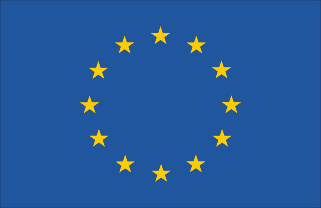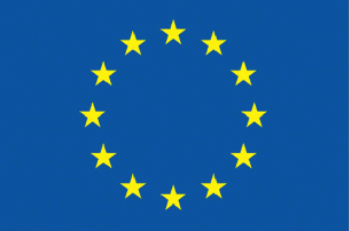
Permanent Structured Cooperation (PESCO)
Deepen defence cooperation between EU Member States


























Permanent Structured Cooperation (PESCO)
Deepen defence cooperation between EU Member States


























PESCO PROJECTS
Next Generation Medium Helicopter (NGMH)
- Coordinator

- Project
Members -
The project objective is to provide coherent solutions for future EU rotorcraft capabilities among the development of new platforms and the upgrade of existing ones (e.g., NH90).
PROJECT DESCRIPTION
Several initiatives have been launched very recently about next generation rotorcrafts capabilities: the NATO project Next Generation Rotorcraft Capability (NGRC), (MoU signed in June 2022 by UK, IT, FR, DE, NL, EL) the EDF 2021 project European Next Generation Rotorcraft Technologies (ENGRT), assigned to FR, IT, DE, NL, EL, ES, FI and SE Industry.
The ENGRT project is essential to organize EU industry and insure the European Sovereignty in the future generation of rotorcrafts for the next decades. This EDF project addresses at this stage mainly research and technology, some of them possibly usable for earlier upgrade of existing platforms. At the same time, some EU existing fleets may still have an important potential flying maybe until 2050+. This is e.g. the case of the NH90, the result of a cooperation program with deep EU roots: France, Germany, Italy and the Netherlands launched it in 1992. Today, it involves 11 States, among which 8 EU MS (FR, IT, DE, FI, SE, BE, NL, ES). As renewal perspectives for MEDIUM-SIZE MULTI-ROLE HELICOPTER based on NGRC or ENGRT will likely not occur before 2040+, so current capabilities must undergo a modernisation process in order to remain suitable for 2030+ missions and operations.
In this context, the present NGMH project aims at creating a dedicated forum for pMS to discuss in a consistent way the EU operational needs both on the upgrade of the EU existing fleets (e.g. NH90) and on the European Next Generation Rotorcraft, in order to harmonize the needs and the calendar of EU countries on future capabilities of rotorcrafts. For example, the modernization and extension of NH90 until 2050+ could be possible only if it is shared among several countries to ensure that the size of the NH90 fleet will remain sufficient to allow affordable development, production and maintenance costs.
This forum aims to address both the renovation of existing fleets and the introduction of the next generation of rotorcraft, to ensure consistency between their operational use, their schedule, their interoperability (in case of co-existence), and the possible sharing of technological developments between them. Regarding existing fleets (e.g. NH90), the project will identify obsolete components, provide coherent solutions, and initiate a reflexion on which upgrades are required for the assets to deliver on future missions and operations (connectivity, collaborative combat, manoeuvre, penetration, survivability, and armament capabilities). In doing so, existing fleets will remain suited to 2030+ missions and operations until or in complement of the arrival of next generations rotorcrafts. Moreover, it is essential to identify a common road map between pMS for renovation of existing fleets to avoid parallel short-time modernization projects by each pMS, which would be very inefficient for the cost, the industrial capability and the availability of the fleets.
The project will identify the needs of pMS until 2050+ and will identify shared, consistent and affordable roadmaps for both the modernisation of existing fleets and the next generation rotorcraft to ensure a high level of EU rotorcraft capabilities during the whole period 2030-2050+.
OBJECTIVES/PRODUCTS
To create a dedicated forum to prepare the future of EU military rotorcrafts in the medium and long term. This will include both the discussions on new rotorcraft platforms and the mid-life renovation of existing helicopters (e.g. NH90) in order to ensure the coherence of EU rotorcraft capabilities and technological developments. These discussions are necessary for consistent modernisation pMS’ fleets and preparation of the next generation rotorcrafts.
This forum aims to provide coherent solutions for future EU rotorcraft capabilities among the development of new platforms and the upgrade of existing ones (e.g. NH90). The analysis of obsolete components of existing fleets and the development of new connectivity, manoeuvre, penetration, survivability, collaborative and armament capabilities will allow the NGMH pMS to face modern threats and meet missions and operations prerequisites from 2030 to 2050+ in a coherent and affordable way. Elaborate common requirements on viable options and calendar.
More information on the project can be found here:
All Projects
- European Defence Airlift Training Academy (EDA-TA)
- Chemical, Biological, Radiological and Nuclear (CBRN) Surveillance as a Service (CBRN SaaS)
- [CLOSED] European Training Certification Centre for European Armies (ETCCEA)
- Helicopter Hot and High Training (H3 Training)
- Joint EU Intelligence School (JEIS)
- Integrated European Joint Training and simulation Centre (EUROSIM)
- EU Cyber Academia and Innovation Hub (EU CAIH)
- Special Operations Forces Medical Training Centre (SMTC)
- CBRN Defence Training Range (CBRNDTR)
- European Union Network of Diving Centres (EUNDC)
- [CLOSED] European Union Training Mission Competence Centre (EU TMCC)
- [CLOSED] EU Test and Evaluation Centres (EUTEC)
- Counter Battery Sensors (CoBaS)
- Deployable Military Disaster Relief Capability Package (DM-DRCP)
- Armoured Infantry Fighting Vehicle / Amphibious Assault Vehicle / Light Armoured Vehicle (AIFV/AAV/LAV)
- EU Military Partnership (EU MilPart)
- Integrated Unmanned Ground System (UGS)
- Integrated Unmanned Ground System 2 (UGS2)
- EU Beyond Line Of Sight (BLOS) Land Battlefield Missile Systems (EU BLOS)
- Main Battle Tank Simulation and Testing Center (MBT-SIMTEC)
- [CLOSED] Indirect Fire Support Capability (EuroArtillery)
- [CLOSED] EUFOR Crisis Response Operation Core (EUFOR CROC)
- Anti-Torpedo Torpedo (ATT)
- Essential Elements of European Escort (4E)
- Critical Seabed Infrastructure Protection (CSIP)
- European Patrol Corvette (EPC)
- Maritime (semi) Autonomous Systems for Mine Countermeasures (MAS MCM)
- Harbour and Maritime Surveillance and Protection
- Upgrade of Maritime Surveillance (UMS)
- Deployable Modular Underwater Intervention Capability (DIVEPACK)
- Maritime Unmanned Anti-Submarine System (MUSAS)
- Medium size Semi-Autonomous Surface Vehicle (M-SASV)
- Air Power
- Airborne Electronic Attack (AEA)
- European Medium Altitude Long Endurance Remotely Piloted Aircraft Systems – MALE RPAS (Eurodrone)
- [CLOSED] European Attack Helicopters TIGER Mark III
- Future Short-Range Air to Air Missile (FSRM)
- Future Medium-size Tactical Cargo (FMTC)
- Integrated Multi-Layer Air and Missile Defense system (IMLAMD)
- Counter Unmanned Aerial System (C-UAS)
- Next Generation Medium Helicopter (NGMH)
- Small Scalable Weapons (SSW)
- Strategic Air Transport for Outsized Cargo (SATOC)
- Rotorcraft Docking Station for Drones
- Arctic Command & Control Effector and Sensor System (ACCESS)
- Automated Modelling, Identification and Damage Assessment of Urban Terrain (AMIDA-UT)
- Cyber Ranges Federations (CRF)
- European Secure Software defined Radio (ESSOR)
- Cyber Threats and Incident Response Information Sharing Platform (CTIRISP)
- Cyber Rapid Response Teams and Mutual Assistance in Cyber Security (CRRT)
- Strategic C2 System for CSDP Missions and Operations (EUMILCOM)
- European High Atmosphere Airship Platform (EHAAP) – Persistent Intelligence, Surveillance and Reconnaissance (ISR) Capability
- One Deployable Special Operations Forces (SOF) Tactical Command and Control (C2) Command Post (CP) for Small Joint Operations (SJO) – (SOCC) for SJO
- Electromagnetic Warfare Capability and Interoperability Programme for Future Joint Intelligence, Surveillance and Reconnaissance (JISR)
- Cyber and Information Domain Coordination Center (CIDCC)
- Robust Communication Infrastructure and Networks (ROCOMIN)
- Network of Logistic Hubs in Europe and Support to Operations (NetLogHubs)
- Military Mobility (MM)
- Energy Operational Function (EOF)
- Geo-meteorological and Oceanographic (GeoMETOC) Support Coordination Element (GMSCE)
- Timely Warning and Interception with Space-based TheatER surveillance (TWISTER)
- Materials and components for technological EU competitiveness (MAC-EU)
- EU Collaborative Warfare Capabilities (ECoWAR)
- European Global RPAS Insertion Architecture System (GLORIA)
- ROLE 2F
- [CLOSED] Co-basing
- [CLOSED] European Medical Command (EMC)
